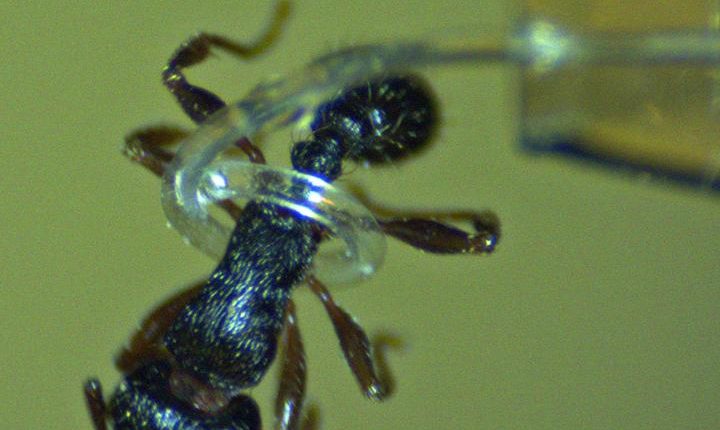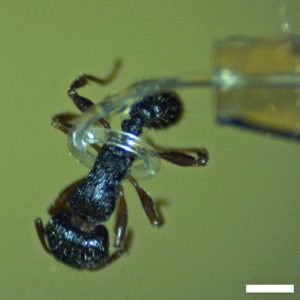
Any traditional robots you’ve come across have two fingers that they squeeze together to pick things up with, but not these robots.
Iowa State University engineers have developed a new kind of appendage for robots – a microrobotic tentacle that looks like a tiny tube.

“Most robots use two fingers and to pick things up they have to squeeze,” said Jaeyoun (Jay) Kim, an Iowa State University associate professor of electrical and computer engineering and an associate of the U.S. Department of Energy’s Ames Laboratory. “But these tentacles wrap around very gently.”
The fact that the tentacles wrap ever-so-gently around an object makes them perfect hands and fingers for small robots designed to safely handle delicate objects.
The spiraling microrobotic tentacles are described in a research paper recently published in the journal Scientific Reports. Kim is the lead author.
The paper describes how the engineers created these microtubes that are just 8-mm long and less than a hundredth of an inch wide. They’re made from PDMS, a transparent elastomer that can be a liquid or a soft, rubbery solid.
The paper also describes how the researchers sealed one end of the tube and pumped air in and out. The air pressure and the microtube’s asymmetrical wall thickness created a circular bend. They further describe how they added a small lump of PDMS to the base of the tube to amplify the bend and create a two-turn spiraling, coiling action which is exactly what the engineers were hoping for.
“Spiraling tentacles are widely utilized in nature for grabbing and squeezing objects,” the engineers wrote in the paper. “There have been continuous soft-robotic efforts to mimic them…, but the life-like, multi-turn spiraling motion has been reproduced only by centimeter-scale tentacles so far. At millimeter and sub-millimeter scales, they could bend only up to a single turn.”
It took a lot of problem solving to create the extra turn in the microrobotic tentacles. “Yes, we scratched our heads a lot,” Kim said.
The engineers had to develop new production techniques to create the microtubes in order to figure out how to peel them off a production template by using computer modeling processes.
According to Kim, the resulting microrobotic tentacle is “S-cubed – soft, safe and small” which makes it ideal for medical applications because the microrobotic tentacles can’t damage tissues or even blood vessels.
The current study was supported by Kim’s six-year, $400,000 Faculty Early Career Development Award from the National Science Foundation.
The project just may be a perfect combination of two robotic trends: microrobotics and soft robotics.
“There’s microrobotics, where people want to make robots smaller and smaller. And there’s soft robotics, where people don’t want to make robots out of iron and steel. This project is an overlap of both of those fields. I want to pioneer new work in the field with both microscale and soft robotics,” said Kim
